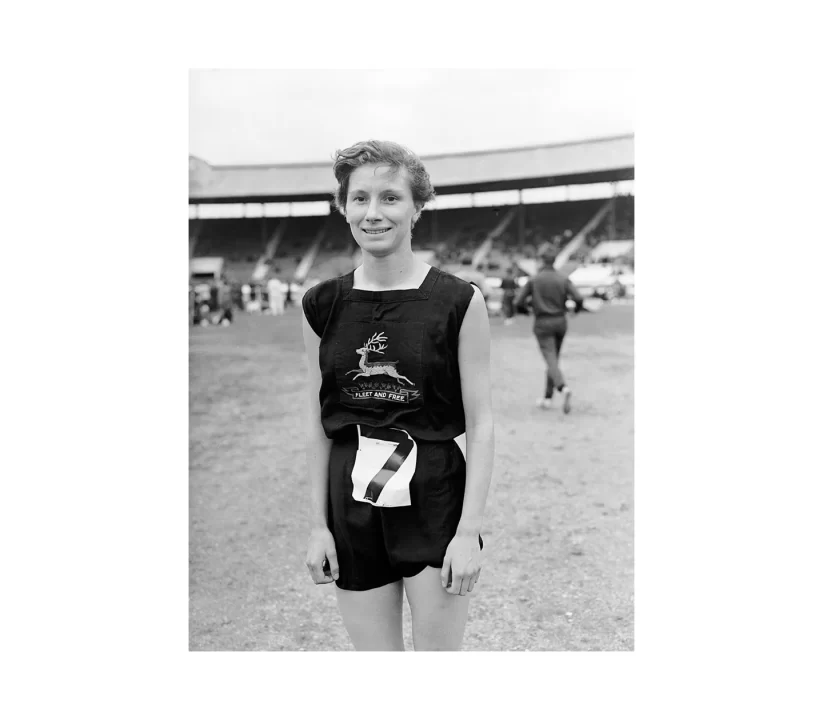Remembering the 5 minute mile
[ad_1]
It’s happening soon, but many won’t even know about it. The 70th Anniversary of Diane Leather’s Ground Breaking Sub 5 Minute Mile.
On 29th May 1954, only 23 days after Roger Bannister’s legendary sub four minute mile, Diane Leather was the first woman to break the five minute mile barrier.
On a recent trip to the Anglo-Celtic Plate 100k, where the England women’s team of Sarah Webster, Melissah Gibson and Julia Davis, ran a trio of performances that would have taken gold at any World Championship in history, we had the pleasure of speaking to Rebecca Taylor about someone who’s name we didn’t know.
“This took place in an age where running was thought detrimental to women’s health. Women were not allowed to race further than 200m in the Olympic Games,” Taylor tells me. “Because of this Diane Leather never received the fame and recognition of her male counterpart.”
We should be commemorating both marks
The four minute mile story of Bannister is something every distance runner in the world has heard of, definitely every club runner. It’s a shame the name of Diane Leather isn’t as well known. SOAR Running and Taylor are keen to change that.
From 23rd to 29th May 2024, SOAR invites running communities and runners around the world, to dedicate a mile to the 70th anniversary of the first women’s sub 5 minute mile.
Your mile can be run however and with whoever you want, and feel free to shout far and wide to share the story of Diane Leather as you do. Competition details here or at the bottom of the article.
The story of the five minute mile
This section of the article is written by Rebecca Taylor and first posted on the SOAR Running website here.
Though it took place in 1954, the impact of Roger Bannister’s sub-4-minute mile on the public’s imagination cannot be understated. The time is a mark of a seriously good male athlete to this day.
Iffley Road track, where the barrier was broken, is still subject to runner pilgrimages. Blue plaques, films, halls of fame and statues celebrate the achievement. But while the men were locked in a 4-minute arms race, what were the women up to?
Born in 1933 in Streetly, Staffordshire, Diane Leather was an active child playing lacrosse, netball, and hockey at school. Inspired by the women in the 1952 Helsinki Olympics, she was moved to join a local athletics club, Birchfield Harriers.
Her talent and potential were immediately spotted by coach Dorette Nelson Neal who set about training and encouraging her to race the mile. Diane’s running progressed beautifully and in 1953 she was part of a British relay team which set a world record for the 880 yards (half a mile) relay.
Barriers beyond the hurdles
To give some context, in those days long-distance running was considered dangerous to a woman’s health and even fertility. 70 years ago women’s races were officially capped at just 200m in the Olympic Games.
This remained the case until 1960 when the 800m was added, the 1500m appearing later in 1972. But despite the lack of official recognition, the battle for a woman to break 5 minutes was fierce and it became Diane’s holy grail.
Many attempts had been made, and the time was being chipped away by Anne Oliver of Britain, Edith Treybal, from Romania and Diane Leather.
Finally, on May 26th, 1954, Diane ran 5:00.2. So close now that she could smell it. She tried again 3 days later.
At Alexander Stadium in Birmingham, alone at the front and without a pacemaker, she broke the tape at 4:59.6 on 29th May 1954, just 23 days after Roger Bannister’s historic sub-4.
Recognised as the world’s best rather than the world record, Diane went on to reduce her mile time to 4:45.0 at the White City Stadium on 21 September 1955. This was the world’s best time for over seven years.
National Newspapers take note at the time
Athletics was popular in the 50’s and Diane’s achievement was celebrated in the newspapers at the time. No film exists of her sub-5, but there is a Pathe News film of her tantalising 5:00.2 you can watch here.
Sadly, Diane Leather is not a well-known name now, but she was finally inducted into the England Athletics Hall of Fame in 2013. She died in 2018 in Truro aged 85 after a long career as a social worker and as a mother to a family of four.
Nowadays the fastest women’s mile time stands at 4:07.64 by Faith Kipyegon of Kenya. Ran during a Diamond League meeting at Stade Louis II, Monaco, on 21 July 2023. Still, 7 seconds feels like a lot to shave off from a mile, but could we see a sub four minute mile in the next five or ten years?
The competition and a panel talk
From 23rd to 29th May 2024, SOAR invites running communities and runners around the world, to dedicate a mile to the 70th anniversary of the first women’s sub 5 minute mile. Don’t worry, there will be prizes:
Every runner that takes part will be entered into a prize draw to win one of 5 exclusive SOAR Miler Memberships.
Fastest women’s mile logged – £250 SOAR Gift Card Most unusual mile location – £150 SOAR Gift Card
The best 3 Instagram posts/stories tagging @soar_running that captures the spirit of the SOAR: Fleet and Free Mile celebration – £150 SOAR Gift Card
Runners are asked to log their miles on Strava/IG/Garmin Connect/Coros etc. Then submit a screen grab to: fleetandfree@soarrunning.com to claim their reward.
In addition to this there is a SOAR: Fleet and Free Panel Talk on 22nd May from 18:45
Join in for the panel talk at SOAR HQ. Experts will discuss women’s running history and achievements, the barriers women face to race participation and what can be done to overcome them.
[ad_2]


















